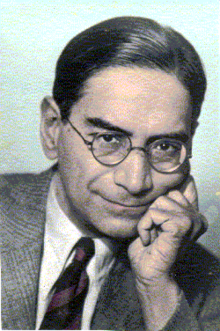Governance
National Statistics Day
- 29 Jun 2020
- 4 min read
Why in News
This year, the Statistics Day (29th June) will be celebrated virtually, in view of the travel and safety advisories on account of the global Covid-19 pandemic.
Key Points
- Every year, the Statistics Day is celebrated on 29th June, the birth anniversary of Prof. Prasanta Chandra Mahalanobis, to recognise his invaluable contribution in establishing the National Statistical System.
- Aim:
- To popularise the use of statistics in everyday life and sensitise the public as to how statistics help in shaping and framing policies.
- To raise public awareness, especially among the younger generation, about the role of statistics in socio-economic planning.
- Theme for 2020:
- SDG-3 (Ensure healthy lives and promote well-being for all at all ages) and SDG-5 (Achieve gender equality and empower all women and girls).
- It carries forward the theme for 2019 which was ‘Sustainable Development Goals (SDGs)’.
- SDG-3 (Ensure healthy lives and promote well-being for all at all ages) and SDG-5 (Achieve gender equality and empower all women and girls).
- New Releases and Launch:
- The updated version of the Report on Sustainable Development Goals-National Indicator Framework (NIF) Progress Report 2020 will be released during the event.
- The Indian Statistical Services Cadre Management Portal will also be launched.
- The winners of Prof. P C Mahalanobis National Award and Prof. P. V. Sukhatme Award 2020 will be declared during the event.
- In 2019, the Ministry of Statistics and Programme Implementation instituted Prof. P C Mahalanobis National Award in official statistics for recognizing outstanding achievement of official statisticians in central government, state governments and institutions.
- The Ministry also recognises the outstanding contribution for high-quality research work in the field of applied and theoretical statistics benefitting the official statistical system through the Prof. C R Rao and Prof. P V Sukhatme awards, awarded in alternate years.
Prasanta Chandra Mahalanobis (1893-1972)
- He is considered the father of modern statistics in India, founded the Indian Statistical Institute (ISI), shaped the Planning Commission (which was replaced by the NITI Aayog on 1st January 2015) and pioneered methodologies for large-scale surveys.
- He introduced innovative techniques for conducting large-scale sample surveys, calculated acreages and crop yields, using the method of random sampling.
- He also devised a statistical method called ‘Fractile Graphical Analysis’, used to compare socio-economic conditions of varied groups.
- Timeline:
- 1930: Proposed the Mahalanobis Distance for the first time, which is a measure of comparison between two data sets.
- The formula is used to find the distance between a point and a distribution, based on measurements in multiple dimensions. It is widely used in the field of cluster analysis and classification.
- 1932: Founded the ISI in Kolkata (formerly Calcutta) which was declared as an institute of national importance in 1959.
- 1933: Launched ‘Sankhya: The Indian Journal of Statistics’.
- 1950: Established the National Sample Survey and set up the Central Statistical Organisation to coordinate statistical activities.
- 1955: Became a member of the Planning Commission and continued in that capacity till 1967.
- He was instrumental in formulating India’s second five-year-plan (1956-1961), which laid the blueprint for industrialisation and development in India.
- 1968: Honoured with the Padma Vibhushan.
- He was also conferred a large number of awards by international organisations.
- 1930: Proposed the Mahalanobis Distance for the first time, which is a measure of comparison between two data sets.






